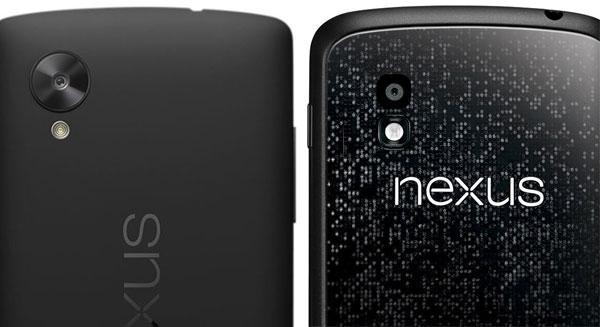
News and reviews of the Nexus 5 are still popping up as we discover the new device just a week after its release. The Nexus 5 not only brings a new and improved design to the Nexus phone, but with it also touts a new version of Android. While Android version 4.4 would seemingly be attached to the Jelly Bean moniker given that Android 4.0 and above fit under the name, Google considered the new version of Android to be worthy of taking on the name of a new dessert, KitKat. Both the Nexus 5 and KitKat have made quite a name for themselves since their release last week, and the more I see from the Nexus 5, the more I'm inclined to say that I think that the Nexus 5 serves as a perfect successor to the Nexus 4.
First, let's take a step back in time and remember what the release of the Nexus 4 was like. The device itself wasn't exactly flagship material, but it wasn't a dud either. The most important thing to keep in mind about the Nexus 4 was that its purpose was to serve as a significantly cheaper alternative to most other phones on the market without requiring a contract be attached to it. Without a contract and a subsidized price, even mid-range phones can start anywhere from $450-$499. Yes, these little computers in our pockets can cost twice as much as a PC that's more powerful, but that's the price we normally pay for convenience. Normally.
But then the Nexus 4 comes out. The specs include a 4.7-inch screen with a 1280x768 resolution, giving it 320 ppi (keeping in mind the human eye can supposedly not differentiate between anything above 300 ppi from the normal distance that we would hold a smartphone away from our face). There is an 8-megapixel rear-facing camera, which was and is fairly common in most smartphones still today, with a 1.3-megapixel front-facer. The phone also supports NFC, something that not all smartphones include today. The Nexus 4 also supported wireless charging, another nice feature that many smartphones still don't have. The phone runs on a Quadcore Snapdragon S4 processor, with 2 GB of RAM and comes in either 8 or 16GB of internal memory. The Nexus 4 supported 3G and HSPA+ speeds, but not LTE.
Now, looking at the specs that the Nexus 4 had, even now it doesn't look too terribly bad if it's sold at the right price. The one thing that I remember being disappointed about initially, but was mostly just surprised, was that the Nexus 4 didn't support LTE. LTE was something that I mocked the iPhone for leaving out of the iPhone 4S, and claimed that the iPhone 5 was definitely too late to the party when it came to including LTE, so what made the Nexus 4 any different? Again, everything pretty much all falls back on price. With the 8GB Nexus 4 only costing $299, it really didn't seem that bad of a trade-off, especially considering that at least it had HSPA+. Even the iPhone 4S only could get up to the 3G speeds, and it cost more money full-price. So for the Nexus, I found the lack of LTE forgiveable.
The Nexus 5, however, really takes care of the two issues that I saw present in the Nexus 4. Despite being such a cheap cost for a full-price device, there was still concern for people when it comes to making the purchase when there are other phones on the market that they probably could get for cheaper under subsidized pricing. Aside from LTE, there was also the fact that the memory allotments for the phone just weren't up to speed with what other manufacturers had started offering. That, and the device also didn't come with a microSD card slot. Now, Google hasn't ever really seemed that interested in microSD, and instead seems to be pushing for users to adopt the use of cloud storage. But for many, cloud storage isn't the most ideal option.
While Google and LG once again opted not to include a microSD card slot, they did up the ante a bit by bringing a 32GB option into the mix and nixed the 8GB variant with the Nexus 5. Now, the lowest priced Nexus offers at least 16GB of memory, as well as LTE. Everything about the Nexus 5 one-upped the Nexus 4 just a little bit, but really made it that much better of a device. The screen size is just a little bit bigger at 5 inches with a 1080p display, a 2.26Ghz Snapdragon 800 processor, 2GB of RAM, LTE support and an 8-megapixel camera with optical image stabilization , not to mention running on Android 4.4 KitKat makes this device about as flagship as you can get without being complete overkill. Although the price has increased by $50 for the lowest amount of memory, I find that the price is still well worth it when it comes to the Nexus 5.
And that's why I think the Nexus 5 serves as the perfect successor to the Nexus 4. Well done, Google and LG.
Readers, what are your thoughts regarding the Nexus 5? Do you think that the Nexus 5 serves as a good successor to the Nexus 4, or would you have liked to see something different? Let us know your thoughts in the comments below!